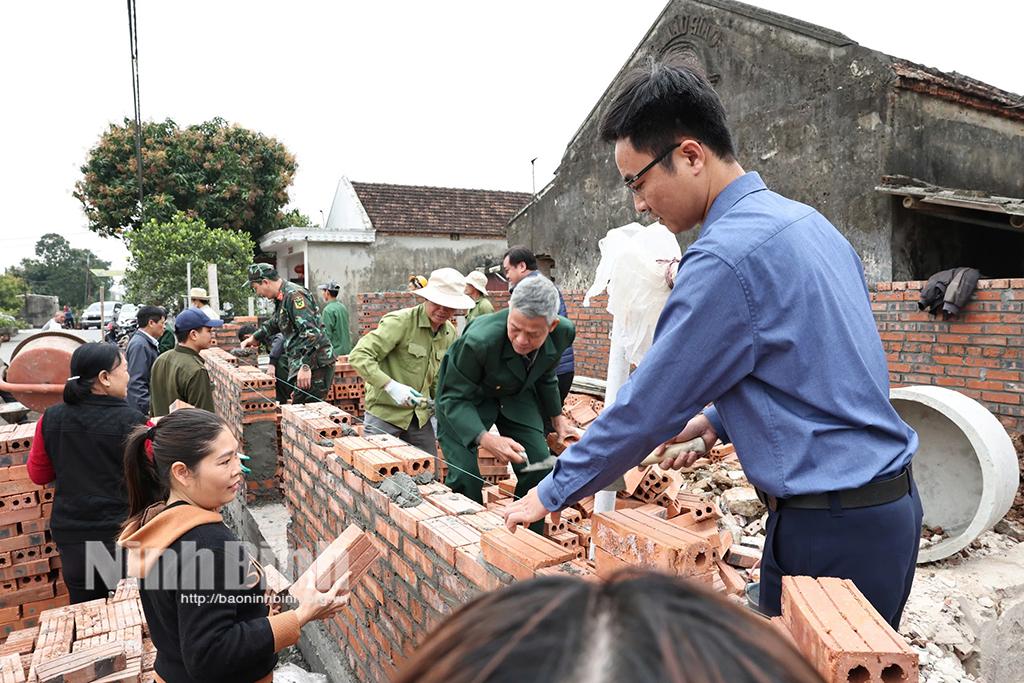The province has mobilised and focused all resources to develop infrastructure system modernly and synchronically. It has been giving priority to key transport projects and inter-regional routes that spread widely and create momentum for investment attraction and sustainable socio-economic growth.
Creating breakthroughs from synchronic infrastructure
In recent years, the infrastructure of Ninh Binh has changed significantly. Many strategic traffic routes have been invested in, expanded, and connectivity between the provincial centre and districts, areas, tourist attractions, and key national highways have been strengthened.
The East-West route (phase 1), the North-South expressway in the East, Cao Bo-Mai Son section, and Mai Son-National Highway 45 section; the renovation and upgrading of DT 477 road; the route connecting National Highway 12B with National Highway 21B, the coastal road, and inter-provincial routes have been synchronized, which have contributed to shortening travel time, expanding development space, and promoting trade.
Along with that, after the mergence, Ninh Binh province has emerged as an industrial hub in the Northern region with prominent industrial parks such as: Phuc Son, Khanh Phu, Ninh Phuc, Gia Vien, Tam Diep, Gian Khau, Hoa Xa, Bao Minh, Rang Dong Textile, Dong Van I, Dong Van III, and Dong Van IV.
With a synchronous infrastructure system, convenient transport, abundant labour resources and transparent investment incentive policies, this area is strongly attracting foreign direct investment (FDI) and attracting businesses to invest in production and business development. In the first nine months, the province recorded 267 new projects, including 197 domestic projects with total registered capital of 46.74 trillion VND and 70 FDI projects with combined registered investment of 924 million USD.
Tourism infrastructure remains a prominent strength of Ninh Binh. The province currently has about 70 tourist areas and sites. Many areas have been invested in at the national level such as Trang An and Tam Chuc.
By July 1, 2025, Ninh Binh had about 1,500 accommodation establishments with nearly 20,000 rooms; 74 travel agencies and nearly 40,000 tourism workers.
Many national and international events have been successfully organised, contributing to affirming the Ninh Binh tourism brand on the world map.
Concretising target of infrastructure one step ahead
Recently, the Ninh Binh provincial Party Committee’s Standing Board has closely followed the resolutions of the Central Party Committee, concretising the programmes for developing transport, urban, industrial and eco-cultural tourism infrastructure. The province has consistently adhered to the viewpoint of "infrastructure one step ahead", ensuring synchronous and continuous implementation from the province to the grassroots level.
Resources are mobilised from local budgets, central capital and economic sectors, especially in the form of public-private partnerships.
Many key projects are being accelerated, such as the Ninh Binh-Hai Phong Expressway project; investment projects for construction and business of infrastructure of Dong Van III Supporting Industrial Park; Dong Van V Industrial Park Phase I, Dong Van VI Industrial Park; Day River overpass, Nam Dinh-Lac Quan-Ninh Co coastal route, Ninh Co Economic Zone connecting road and Cao Bo-Mai Son route... When completed, these projects will expand the development driving force axis, strengthen regional connectivity and improve competitiveness.
The province also is planning to invest in an airport, deep-water ports, high-speed railways, provincial administrative centres, and regional-inter-regional road systems. It is expected that by 2030, Ninh Binh will have at least 32 industrial parks in operation with a 70% occupancy rate; in the 2030-2040 period, 44-60 industrial parks will be developed; in the 2040-2050 period, 60-80 industrial parks will be developed.
Along with that, Ninh Binh is focusing on completing urban infrastructure in a civilised and modern direction associated with landscape conservation and heritage values.
Dang Xuan Phong, member of the Party Central Committee, Secretary of the Ninh Binh provincial Party Committee emphasised the reports on socio-economic development orientations are closely related to each other; in which, infrastructure development will promote socio-economic development, associated with heritage conservation, and well implement social security work.
For the infrastructure development group, in the next five years, the province will focus on building an international airport; deep-water ports, coastal economic zones, industrial parks, high-speed railways, urban railways, and infrastructure connecting regions. In particular, it is necessary to unify the location, scale, and form of airport investment, striving to complete construction by 2027. Regarding industrial park infrastructure development, in the next two years, two high-tech industrial parks must be formed, attracting corporations and innovative investors.
Regarding urban development, Ninh Binh province strives to complete the criteria by 2029 to seek the central authorities’ approval to recognise a centrally-run city in 2030 in the direction of a millennium heritage city.
To implement the above group of issues, Phong requested the provincial People's Committee to focus on directing the rapid completion of planning work, ensuring compliance with the Government's planning and exploiting the province's development strengths.
With high political determination, a strategic vision and a methodical approach, Ninh Binh is gradually concretising the infrastructure goal one step ahead, creating a solid foundation for rapid and sustainable development. When key projects are completed, new development space will be opened up, strengthening regional connectivity, strongly attracting investment resources, and at the same time improving people's quality of life./
